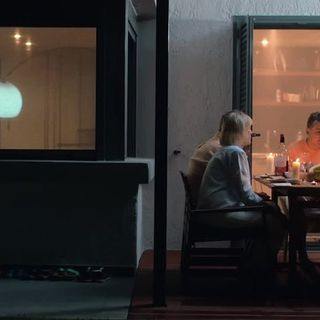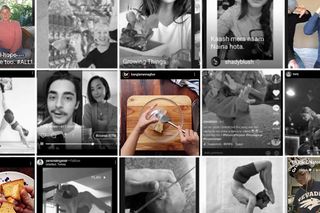
People Are Using ‘Pandemic Productivity’ as a Distraction From Grief, Vulnerability
However, as advocacy for slowing down increases, it is necessary to recognize that choosing respite is also a privilege, say mental health experts.

Journalist Gayatri Shah recently hosted an InstaLive talk on the future of luxury retail post the pandemic. She says that her motivation to set up the session stemmed, partially, from a sense of productivity guilt, triggered by the current overflow of live content on social platforms. A spike in media consumption across global markets has pushed brands and influencers to keep audiences engaged, and stay relevant, via live streams, podcasts,webinars, and video content.
Mental health experts have also observed a significant rise in productivity guilt and productivity anxiety levels amidst a flood of quarantine content. “It’s something we are noticing across people who are in their early twenties up till middle-age. The kind of work people are engaging with can be different, but the underlying feeling seems to be common,” says Naina Shahri, counseling psychologist and team lead at The Alternative Story.
A Google search for “How to stay productive during quarantine” yields over 1,00,00,000 results. As influencer-driven pandemic productivity continues to trend, it has become a hot-button topic with psychosocial researchers. While one camp views the trend as a bid for connection during quarantine, the other notes its self-centred, bragging nature, usually occurring within a certain class.
This hyper-productive response to the lockdown is perhaps symptomatic of a looming mental health crisis within an already anxious, always-on culture.
*
Keeping busy has long been a socially acceptable way to cope with grief. Mental health professionals agree that anxiety often manifests as a feeling of being energized and tensed. “Engaging in activities like cleaning or cooking or any expressive art can be helpful to release those feelings,” says Shahri.
“Some of us use busyness as an escape from our reality. It is a form of division and dissonance [of the mind],” says counseling psychologist Zankhana Joshi of Tatvamasi. This “constant doing,” even in a crisis, is a reflection of the inauthentic nature of our distraction-driven society and our unwillingness to acknowledge feelings of discomfort, she elaborates.
Mike Niconchuk, Director of Research and Development at Beyond Conflict, cautions about the addictive nature of the hyper-productivity high and its association with validation and pride. This is particularly relevant to professionals, like journalists, photographers, aid workers, and doctors, who are on the frontlines of high-trauma situations.
Additionally, while in quarantine, goal achievement is amongst limited available options to trigger dopamine – one of four neurotransmitters responsible for our happiness.
Related on The Swaddle:
For People With Mental Health Conditions, Constant Covid19 Updates Make Everything Worse
Within the constructs of a capitalist society, productivity is often deeply tied to self- worth. In the absence of traditional, external validation, social media offers the ideal stage for performative productivity. Author Natasha Badhwar says this current obsession with the latter is an extension of our self-obsessed lifestyles.
“A lot of it comes from romanticizing hustle culture, where things like burnout and stress are being normalised,” says Sonaksha Iyengar, an illustrator and graphic recorder struggling with the idea of rest without reason.
The pandemic productivity guilt-trap is real, and has been heightened by tone-deaf messaging like Jeremy Haynes’ meme-inspiring, viral tweet claiming that people who fail to upskill during this pandemic lack discipline.
Shah too recalls being incensed by a text she received from a yoga studio dismissing the physical benefits of domestic chores in favor of an immersive workout led by the studio. Both she and Joshi state that for some groups – like mothers working from and at home, people with mental illnesses, and those coping with financial strains or erratic supplies – this productivity — as perceived by social media — may not be feasible. “When we shame people in this time for not being productive, we’re being very irresponsible, because everyone is dealing with the same situation in a very different way,” says Joshi, adding that such messaging also strips away permission to process our feelings.
*
Chef Saransh Goila started #MorningswithGoila, an Instagram Live cooking segment, to spread joy and navigate the sudden slowdown of his otherwise fast-paced lifestyle. But he hasn’t been hosting it lately, having reached a point of fatigue in this lockdown. “Productivity is good for somebody, in this time, if it’s genuine. Everyone needs to learn to detach from peer pressure and the need to be productive,” he adds.
Related on The Swaddle:
Why Being In Isolation Feels So Tiring
Recently, there has been strong advocacy for slowing down. An inability to do so, even when exhausted, stressed, or anxious, is a clear indicator of toxic productivity. “Contemporary urban lifestyles are obsessed with ‘doing things.’ We end up running around in circles, driven by FOMO and rarely truly pause to savour the moment,” says Badhwar.
Research links workplace mindfulness interventions with improved psychological well-being and productivity. Shahri explains, mindfulness helps debunk the social myth that happiness and achievement are co-dependent. Given how everyone is susceptible to pandemic-related
mental illnesses like PTSD, Joshi asserts that it’s also essential to make space for our grief and anxiety to express themselves so we can process them. This can be a challenge when most people would rather be electrically shocked than left alone with their thoughts.
However, in a country where the virus and the subsequent lockdown has had a starkly unequal impact on different classes of society, slowing down can be a privilege.
Shahri iterates that a capitalistic setup, financial debt, and high costs of living make pausing impossible for many. Comparing the contextually different but visually similar migrant exodus and Partition, author and historian Aanchal Malhotra says that survival-specific needs leave people with little concern about inner feelings, which unfortunately get buried under perceived normalcy.
Goila adds, in a highly competitive work culture, slowing down is often equated with falling out, which furthers toxic productivity.
*
While the pandemic is an opportunity to course-correct a hyper-productive culture, opinions vary on its feasibility. All agree that self-care is the need of the hour, but facilitating this mandates greater social awareness, mental health support, and change at a systemic level.
At a time when digital consumption is at its peak in India, Joshi and Goila say accountability and authenticity are key to changing the messaging around toxic positivity and productivity. Shah opines that it can be tricky to tame the behemoth that is social media. Depending on one’s stage of consumption, she says, it’s up to the individual to choose from a mix of feel-good, escapist, and realistic content.
Iyengar stresses on challenging the narrative that entangles self-worth with productivity and busyness. Understanding the boundaries of healthy productivity could help with this, says Shahri. It’s about “feeling fulfilled while doing things for our growth, yet drawing a line when the work starts eating into other aspects of our life.”
Malhotra also suggests introspecting on the sustainability of pandemic productivity; do the things you want to include in your daily life, irrespective of the lockdown.
The development of a vaccine and subsequent normalcy may trigger a psychological desire to sail full speed ahead. However, Shah says that “there will [also] be greater awareness that growth at any cost isn’t sustainable. That more mindful policies related to healthcare, environmental norms, and production will find broader appeal.”
Gretchen Ferrao Walker is an editorial consultant who has collaborated with Indian and international publications like GQ India, Forbes India, Time Out, Architectural Digest India, National Geographic Traveller India, Design Anthology and Collectively.org. She is the former editor of travel bimonthly Time Out Explorer and current mum to a 2-year-old. She enjoys embroidering and making pictures.
Related


WHO Publishes Ethical Criteria for Vaccine Trials that Require Infecting Healthy Volunteers With Covid19
